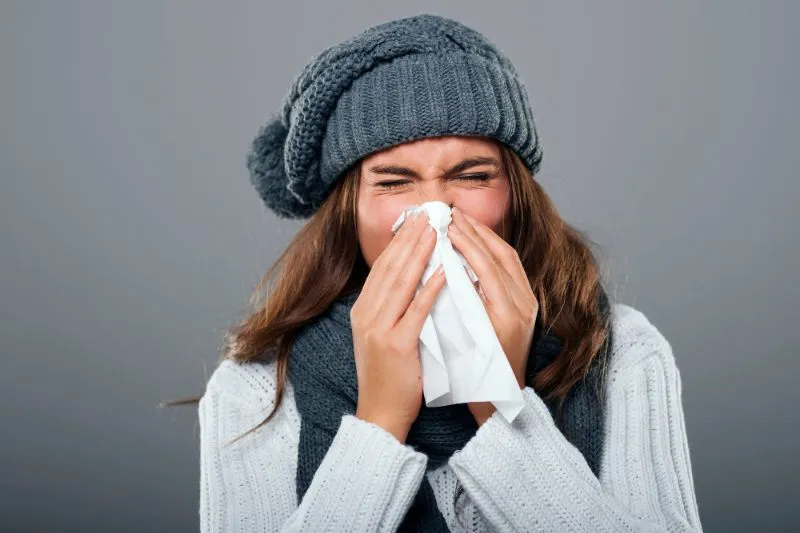Irrespective of where you live, how old you are, or even how well your general health is, chances are that you have been affected by the flu at least once in your lifetime.
Influenza, or the flu as it is more commonly known, is an infectious disease caused by the spread of the influenza virus. It affects people of all ages, all regions, and all social classes. The severity of the disease, however, depends from person to person and case to case.
Symptoms of the Flu
There are multiple symptoms of the flu; each sign's range and severity will depend on the person and the health risks they are generally associated with. However, some common flu symptoms include fever, cold, runny nose, headaches, tiredness, and a cough.
This generally leads to the infected facing shortness of breath, weakness, eye soreness, soreness of muscles, and sometimes nausea which might even lead to a loss in appetite. Generally, these symptoms are prevalent, and people tend not to consult a doctor with just these symptoms.
Patients can, therefore, take care of themselves from the comfort of their homes. However, it is generally recommended for one to take rest and fluids to feel better. These symptoms may range from lasting from 2 days to one week, depending on the patient and the environment that they are in.
Prevention of the Flu
Like the coronavirus, the flu is known to spread through direct and indirect contact with an infected individual. Direct contact can occur when the infected comes directly with an infected individual.
It can be spread through indirect contact as well. This occurs when an infected individual and a healthy individual come into contact through third-party sources, such as when an infected individual touches a metallic surface and later comes into contact with a healthy individual. When the healthy individual touches their mouth, nose, and eyes with their hand, which has now become infected, the virus will then spread to the healthy person as well, and this way, the virus will spread.
Therefore, some of the best prevention methods for the flu include constant washing of the hands and the face, preferably with antibacterial soap and water. If this is not available to you, the person can also use a sanitizer.
Other means of prevention include maintaining a safe distance from an infected individual, ensuring that the cutlery they use for the infected period is separate from the rest of the household, or even wearing a surgical mask.
Due to these reasons, influenza is regularly compared to the coronavirus, as some of the symptoms of the flu and the coronavirus match. Furthermore, the prevention methods for both diseases are also the same.
Treatments for the Flu
As the flu tends to be harmless for most people, patients prefer resting for a few days, drinking healthy fluids such as water and juices at room temperature, and abstaining from consuming alcohol and cold drinks.
Patients are also recommended to eat healthy vegetables and fruits and avoid junk food and street food. Doctors also recommend taking necessary medications such as paracetamol if the body aches deeply bother the patient.
The Centers for Disease Control is known to recommend annual flu shots for anyone in the population who is older than six months or one year. Flu shots are known to lower the severity of the flu and prevent any further complications from occurring. This can be especially beneficial if the patient suffers from a preexisting chronic disease that, when combined with the flu, might prove to be life-threatening. Examples include asthma and acute respiratory issues.
However, patients are advised to visit a doctor when the flu symptoms worsen or if the patient has high-risk factors. These risk factors include when the patient belongs to an at-risk age group, such as an infant (someone under five) or an elder (over 65).
Also, those who suffer from chronic diseases such as asthma or heart issues are at high risk. Pregnant women and people who have weak immune systems are also at risk. People who also have chronic lung diseases, diabetes, or even metabolic disorders. It is also recommended that people that suffer from obesity should also be considered as a group that is at risk.
Moreover, if the flu symptoms worsen, such as vomiting, bleeding, increased chest pains, seizures, or dizziness, the patient should see a doctor soon.
The flu can be quickly dealt with with proper care and prevention, and if the situation worsens, a doctor is available for you on Cura.











